Common lawn weeds
Here we round up the most common British lawn weeds:
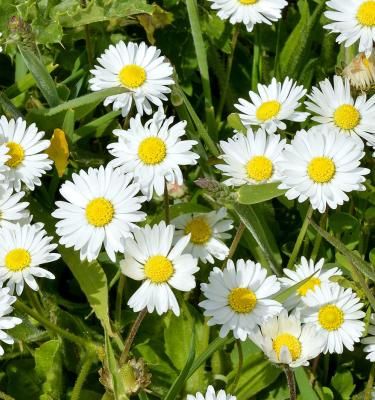
The thick, green beauty of a lawn is often marred by the presence of lawn weeds. Find out the best way of controlling these weeds and preventing them from returning.
Here we round up the most common British lawn weeds:
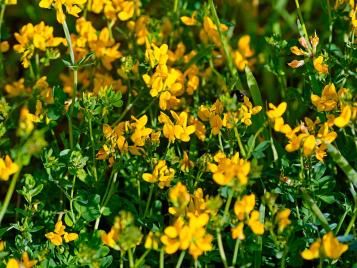
A member of the Clover family, its deep roots create large patches. Runners are sent out underground and overground making this a highly invasive lawn weed
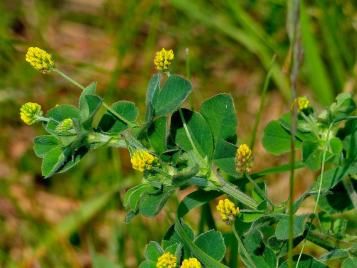
Similar in appearance to Clover, the give-away is the black seed pods which form at the end of the season. Preferring soils with low nutritional value, this weed is not often found on well cared for lawns.

One of the least fussy and easier to recognise our lawn weeds. The ability to grow in almost any condition has made this a very common lawn weed across the UK. The rounded leaves form small rosette shapes, and the flowers are easy to spot with their bright white petals and a yellow centre.

Having quite a flat, low down growth habit, this weed can kill off the grass beneath it. Highly drought tolerant and able to survive in most soil types and compacted ground, this lawn weed is common but easy to control. The fibrous roots easily dig up and the large broad leaves make it ideal to absorb selective weedkillers.

Easily spotted with its upright purple flowers, this member of the mint family spreads by sending out creeping runners. Low mowing is not an issue for this pretty lawn weed, so best to either dig out or use a selective lawn weedkiller.
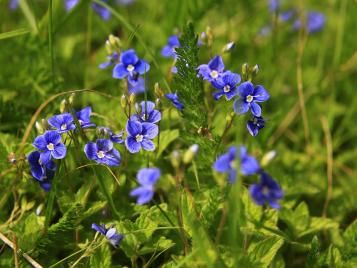
Although the flowers of this slender lawn weed are delicate, this weed is far from it. Tending to prefer closely mown grass, cutting your lawn a bit higher may help your grass out-compete and control this perennial weed.
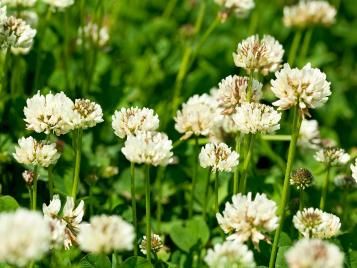
Probably the most common of all lawn weeds, and easily recognised by the shape of its three leaflets and the thin white line curving around the base of each leaf. Sending our creeping runners helps this weed spread very quickly and it will out-compete the lawn grass for space. The white flowers are very popular to bees so take care if you use a selective weedkiller, always spray when the bees are inactive, or even better control the weeds before they flower.
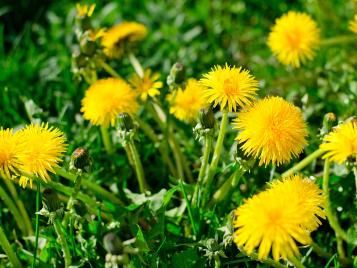
Another common lawn invader, the single yellow flower will create a ball of seeds just waiting for a puff of wind to spread them far and wide.... all over your garden. The long tap-root makes it difficult to dig out without breaking the roots, from which several new weeds can grow. Dandelions are quite tough and can be slow to react to herbicides, so treat them when they are actively growing for quickest results.
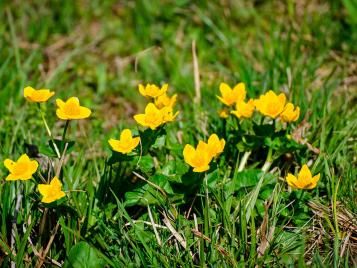
As the name suggests this lawn weed sends out creeping runners along the ground. Usually, happiest in wet soils, improving your drainage should help avoid this perennial weed.

Identified by its large broad leaves, Docks are usually found in poorly kept lawns as they dislike regular mowing. However, like most weeds, they can adapt to suit their surroundings and are known to grown low down in some lawns.
This is a relatively easy lawn problem to fix - for broadleaved lawn weeds, one application of a granular lawn feed and weed killer treatment such as Miracle-Gro EverGreen Complete 4 in 1 or liquid lawn weed killer should kill them if it is applied at the right time. There are a host of other plants with smaller leaves that are not so easily controlled when they infest a lawn. These include lesser trefoil (yellow suckling clover), black medick (a small-leaved clover) common mouse-ear chickweed, yarrow, parsley-part and the blue-flowered speedwell. If left untreated, all these lawn weeds will spread to fight the grass for space, food and light, gradually ruining the look of the lawn. To control smaller leaved weeds without damaging the grass, choose a selective liquid weedkiller recommended for lawn use.
Use during late spring and summer when the grass and weeds are actively growing. The soil should be moist and the weather should be warm. If necessary, water the lawn a day or two before treatment to activate growth and get the sap flowing.
Do not mow the lawn for at least 3 days before treatment. In this time a good leaf cover should have been created and this will give a good area of weed leaves to treat.
Choose a day when it doesn’t threaten rain. The longer the weedkiller remains on the leaf undissolved the better.
Don’t mow the grass for at least 3 days after treatment. This gives the weed sufficient time to move the active ingredients down to the roots for the best kill. Over the next few weeks, the weeds will twist and turn and gradually die off. Don’t worry if you see a sudden burst of upward leaf growth immediately after treatment. This is quite normal and indicates the weedkiller is working.
Note that not all weedkillers are selective - products containing glyphosate, and other general-purpose weed killers will kill grasses as well as broad-leaved weeds. Check the pack instructions to make sure yours is recommended for use on lawns. Lawn weed and feed products will all be suitable for use and when applied as directed will not cause damage to your grass.